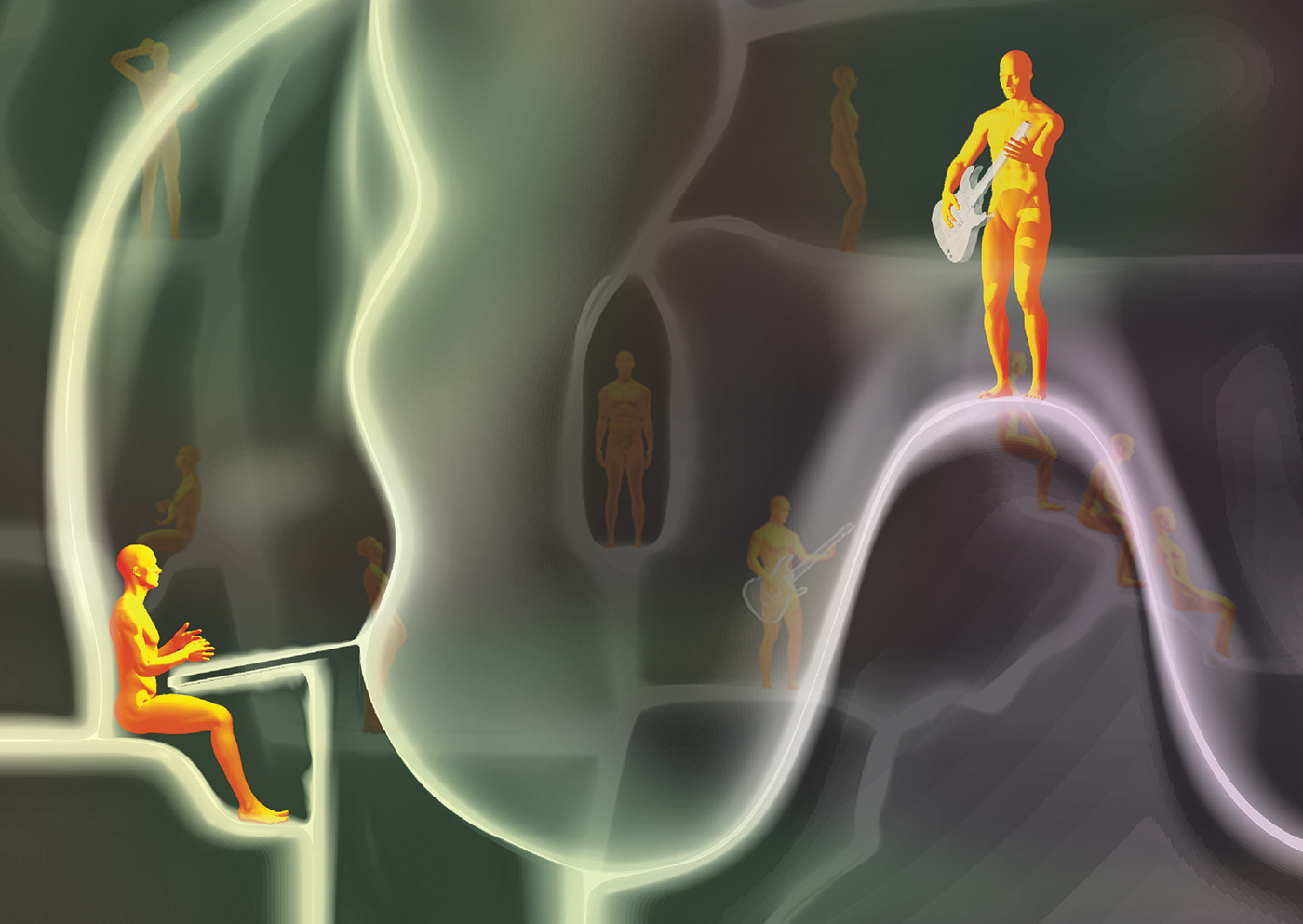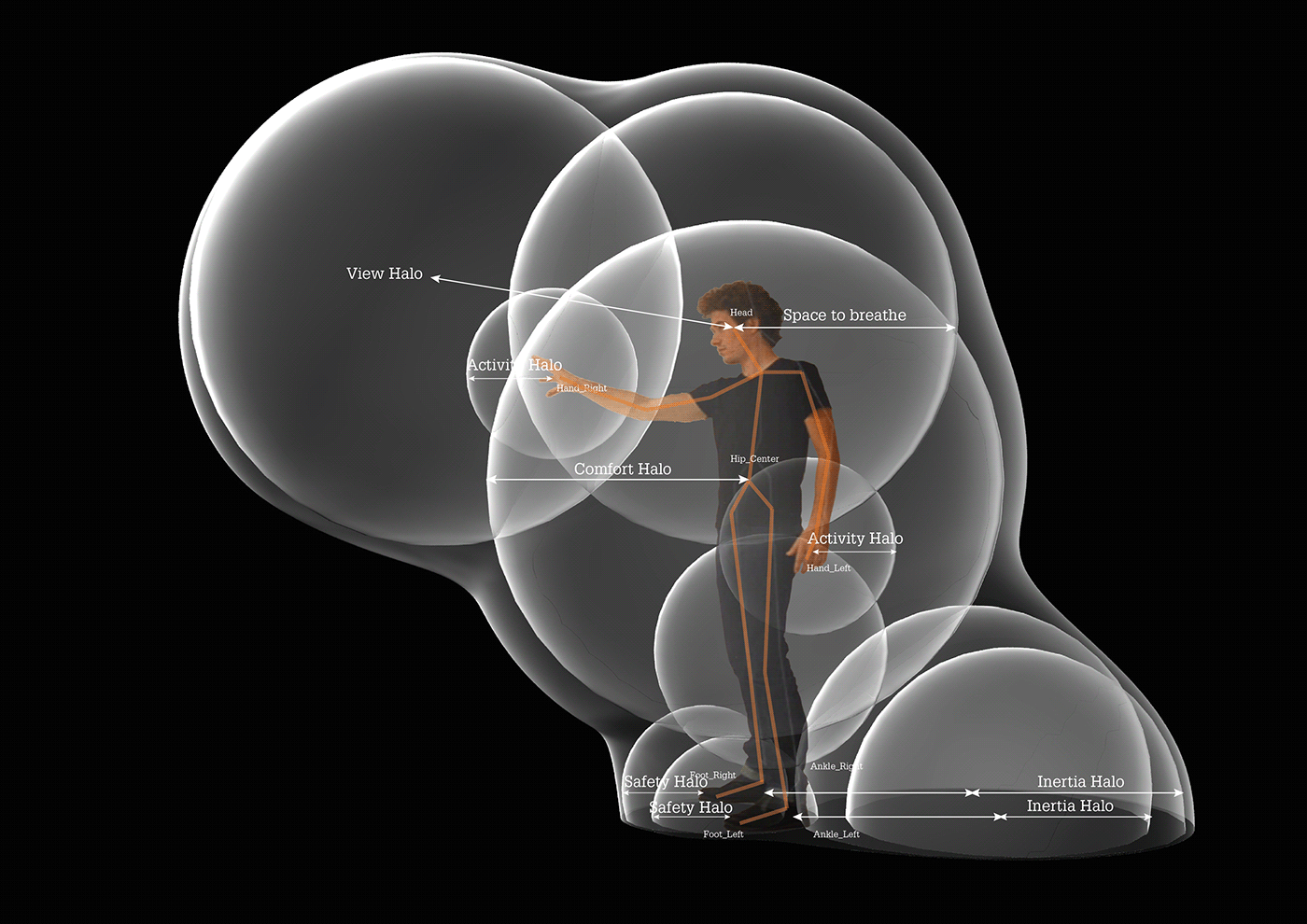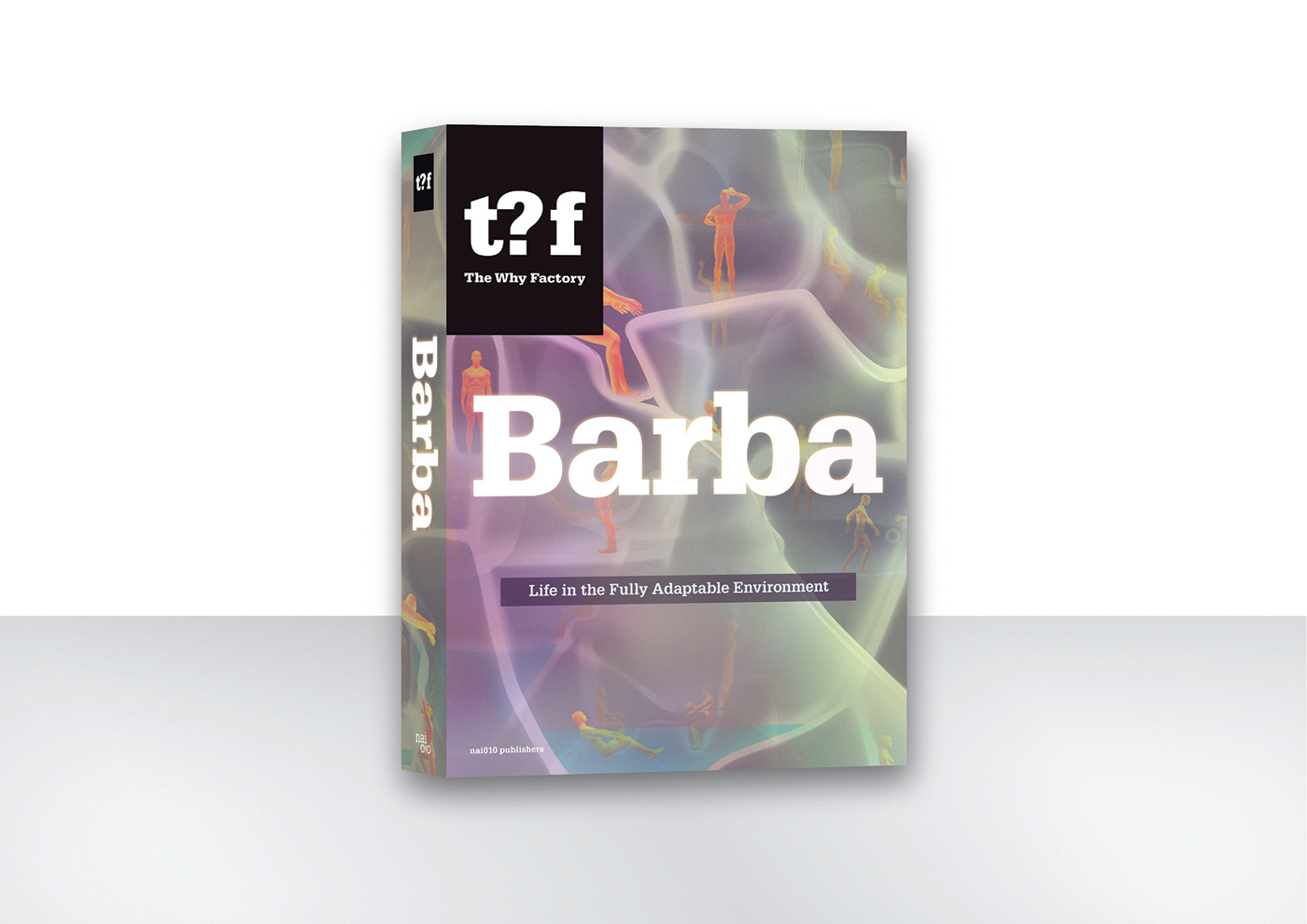
Barba, the Transformer
Life in the Fully Adaptable Environment
In the best tradition of science fiction, this research illustrates how a series of current technological innovations might change the way we build and live in cities in the future. Our first inspiration came from ‘Barbapapa’, an illustrated cartoon character from the 1970s. Invented and drawn by Talus Taylor and Annette Tison, the friendly, blobby protagonist of the eponymous children’s books and television programme could change his shape to resemble different objects. With Barbapapa’s smooth morphosis in mind, we wondered how today’s advancements in robotics, material science and computing might allow us to create environments that transform themselves as easily as Barbapapa could. The project that emerged developed through a series of projects organized by The Why Factory and undertaken in collaboration between Delft University of Technology, ETH Zürich and the European Institute of Innovation and Technology. Neither Barbapapa’s inventors nor anybody else from the team behind the cartoon were involved in this project, but we owe them absolute gratitude for the inspiration that their Barbapapa gave us.
How much space do you need?
The magic carpet
The felt panel could be reinforced with a mesh, like the kind of mesh explored in the ‘Models’ chapter. Proximity sensors could read gestures and allow users to steer the felt’s movement. But before we begin to consider actually producing such a magic carpet, we imagine how it might work, how it could change interior space as we know it . . .

Life in Barba
Fully adaptable environment
Can we imagine living in an environment that would constantly change according to our needs and desires? We’ll illustrate this Barba world, step by step. We’ll start with the user himself and with how Barba reads his body. When the user wakes up, Barba gently pushes him up and follows him wherever he walks. Barba continuously adapts to his movements. Breath enlarges the space. Our gestures direct Barba. In a series of logical steps, our story moves from the user to his room to the home. With more people involved, space has to be negotiated and the negotiation will create a dynamic, nearly sculptural composition of volumes. Eventually, these dynamic volumes lead to a living village that constantly calibrates the balance between social collectiveness and individual desire.


















Space makers
Tools of measurement
How can we realize our vision of Barba space and the fully adaptable environment? We start with the individual body and visualize the space an individual moving person needs and creates. We can use this to start imagining interaction between individuals. We then add specific tools to create furniture or openings. Eventually, tools for structure, services and light are developed to support Barba houses and villages. While in this chapter the fully adaptable environment is a virtual space, the tools employed within it are real. Connected to motion-tracking devices, they allow us to see and imagine how it might feel to live in a fully adaptable environment. The tools presented here can be imagined in use in many different scenarios. They are general tools, things that can be used to analyse, create, plan or design in varied relation to the human body and its flexible spaces.

















Building Barbapapa
Experimenting and experiencing
How might we bring Barba and his fully adaptable city to physical reality? This first test is a very direct attempt. Our vision is remade with analogue materials and rendered in film. While jumps in scale are allowed, virtual models are prohibited in this exercise. The aim is twofold, directed towards experience and experimentation. The intention is to simulate the experience of how the smoothly rendered surfaces of the previous chapters could play out in real life, to simulate the texture of the material and how Barba would feel. The test is simultaneously an experiment with simple and available materials. Could these materials themselves hold the key to new building methods? And is it possible that the advanced building materials about which we’ve speculated are already known to us? That they already exist, are hidden in our kitchens, say? The results presented are deliberately light and playful. Some work with materials that can easily be scaled up to room size, while others are bound to remain conceptual. The aim of this exercise is, above all, to inspire.














Barba the book
Experimenting and experiencing
Barba is the product of a series of education and research collaborations. Over the course of five years, numerous students, teachers and researchers were part of the project, and each of these contributors informed the result you see in this book.

Barba was made by:
Callum Andrews , Louisa Au , Brendan Bakker, Roxanne Belot , Arslane Benamar , Marcel Bilow, Paolo Birrer, Laura Ospina Botero, Nicola Campri , Tania Carl, Riccardo Caruso, Melina Cerfeda, Elena Chestnova, Gloria Chen, Huihua Chen , Yuxiao Chen, Sam Chia, Phillipa Elliot, Rachel Julia Engler, Nicholas Ganz, Stavros Gargaretas, Maosen Geng,
Khalid Ghobashi, Federico Gobbato, Marino Gouwens, Alice Guarisco, Ulf Hackauf, Nadia El Hakim, Pirjo Haikola, Ching He, Marcel Hodel, Ruth Hoogenraad, Alise Jeksabone , Aleksander Jensen, Jayson Johnstone, Mark de Klijn , Léone Kündig, Niek van Laere, Maria Laisi, Catherina Lee , Eun Yu Lee, Chen Li , Christopher Loh, Tomas de Loo, Lex te Loo, Winy Maas, Marine Manchon, Vincent Marchetto, Jeronimo Mejia, Alejandra Martinez Micolta, Andrea Migotto, Alberto Minero, Julia Ting Yan Mok, Rob Moors, Lino Moser, Sander Mulders, Marisa Muscionico, Kai Peter , Huib Plomp, Daniel Pulitin, Marie d'Oncieu de la Batie, Vladimir Ondejcik, Sebastian Oswald, Adrien Ravon, Piet de Reuver, Guendalina Rocchi, Pablo Roquero, Pascal Ruckstuhl, Enrique Ruiz, Dominik Saitl, Virginia Scapinelli, Paula Schilliger, Vera Schmidt, Ansis Sinke, Izabela Slodka, Henry Stehli, Leo Stuckardt, Ugur Sütcü, Ying Yi Tan, Yi Tang, Robbert Verheij, Igor de Vetyemy,
Hans Vlaskamp, Kaegan Walsh, Eline Wieland, Stefanie Winter, Fei Wu, Stefan Wülser, Yangzom Wujohktsang, Rui Xuan, Jordan Yerbury, Saba Zahedi Asl, Barbara Zajac
Callum Andrews , Louisa Au , Brendan Bakker, Roxanne Belot , Arslane Benamar , Marcel Bilow, Paolo Birrer, Laura Ospina Botero, Nicola Campri , Tania Carl, Riccardo Caruso, Melina Cerfeda, Elena Chestnova, Gloria Chen, Huihua Chen , Yuxiao Chen, Sam Chia, Phillipa Elliot, Rachel Julia Engler, Nicholas Ganz, Stavros Gargaretas, Maosen Geng,
Khalid Ghobashi, Federico Gobbato, Marino Gouwens, Alice Guarisco, Ulf Hackauf, Nadia El Hakim, Pirjo Haikola, Ching He, Marcel Hodel, Ruth Hoogenraad, Alise Jeksabone , Aleksander Jensen, Jayson Johnstone, Mark de Klijn , Léone Kündig, Niek van Laere, Maria Laisi, Catherina Lee , Eun Yu Lee, Chen Li , Christopher Loh, Tomas de Loo, Lex te Loo, Winy Maas, Marine Manchon, Vincent Marchetto, Jeronimo Mejia, Alejandra Martinez Micolta, Andrea Migotto, Alberto Minero, Julia Ting Yan Mok, Rob Moors, Lino Moser, Sander Mulders, Marisa Muscionico, Kai Peter , Huib Plomp, Daniel Pulitin, Marie d'Oncieu de la Batie, Vladimir Ondejcik, Sebastian Oswald, Adrien Ravon, Piet de Reuver, Guendalina Rocchi, Pablo Roquero, Pascal Ruckstuhl, Enrique Ruiz, Dominik Saitl, Virginia Scapinelli, Paula Schilliger, Vera Schmidt, Ansis Sinke, Izabela Slodka, Henry Stehli, Leo Stuckardt, Ugur Sütcü, Ying Yi Tan, Yi Tang, Robbert Verheij, Igor de Vetyemy,
Hans Vlaskamp, Kaegan Walsh, Eline Wieland, Stefanie Winter, Fei Wu, Stefan Wülser, Yangzom Wujohktsang, Rui Xuan, Jordan Yerbury, Saba Zahedi Asl, Barbara Zajac










































